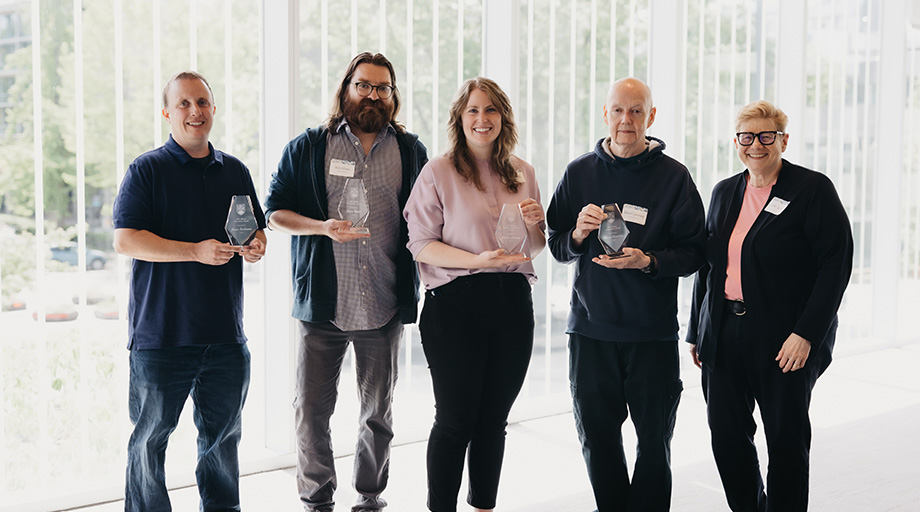In our last post, we introduced the Tr’ondëk Hwëch’in people and the important role they played during the Klondike Gold Rush era, guided by photos from the Phil Lind Klondike Gold Rush Collection. This week, we examine the impacts the Gold Rush migration had on the Tr’ondëk Hwëch’in and their traditional territory, and meet ever-revered Tr’ondëk Hwëch’in chief Chief Isaac.
For important contextual information about 19th– and 20th-century photographic representations of Indigenous people, and the outdated language present in the Phil Lind Collection, please visit our previous blog post.
Impact on the Tr’ondëk Hwëch’in & the land
Settler descriptions of the landscape during the Klondike Gold Rush era painted an image of a hostile territory, portraying the land as “treacherous [and] empty”, despite the fact that it was inhabited by around 200 Tr’ondëk Hwëch’in people at the time.
Though many prospectors did not intend to settle permanently, historian Charlotte Gray nonetheless describes the migration as one of conquest. Photos in the Phil Lind Collection show sprawls of tents around the Yukon and Klondike Rivers, offering a visual representation of the magnitude of the migration.

“Klondike City, and the mouth of Klondike R.” (1898)
As plots of land in Dawson City were too expensive for many prospectors, they began to occupy Tr’ochëk, a traditional Tr’ondëk Hwëch’in fishing settlement along the Yukon River, even erecting their tents between Tr’ondëk Hwëch’in homes.

Tr’ochëk after settler occupation, labelled “Klondyke City” (1899)
They renamed the settlement Klondike City, an English corruption of “Tr’ondëk”, which translates to “hammer river”.

This photo’s caption gives credit to the origin of the river’s name, though mistranslates it (sometime after 1896)
This occupation had drastic impacts on the natural landscape upon which the Tr’ondëk Hwëch’in relied for centuries, forcing them to change their traditional survival patterns. Settlers chopped down trees, ripped up creeks, and overhunted, which resulted in a major decrease in moose and caribou.
Settlers were not only generally careless about the damage they caused to the land, but were also apathetic or even hostile toward the Tr’ondëk Hwëch’in people.
Chief Isaac
The lasting legacy of Chief Isaac, Tr’ondëk Hwëch’in chief during the Klondike era, is one of strength and resilience for the Tr’ondëk Hwëch’in people. A skilled negotiator and vocal advocate for his people, he was respected by the Tr’ondëk Hwëch’in and settlers of Dawson City alike.
While few settlers attempted to learn the Hän language, Chief Isaac (whose traditional name is not known) learned English, giving public speeches and advocating for his people in local newspapers, including the Klondike Nugget and the Dawson Daily News.

Dawson Daily News (1909), one of the newspapers in the Phil Lind Collection
Chief Isaac worked hard to maintain diplomatic relations with the settlers, but was unafraid of criticizing their indifference toward their dispossession of his people. In a local newspaper, he wrote:
“Million white man come and cut down Indian’s wood, kill Indian’s game, take Indian’s gold out of the ground,
give Indian nothing. Game all gone, wood all gone, Indian cold and hungry, white man no care.”
As the stampeders’ incursion on Tr’ochëk became increasingly invasive, Chief Isaac decided to relocate his people. They set their sights on Moosehide Village, a traditional fishing camp south of Dawson City. Despite friction from the Northwest Mounted Police, who had unofficially laid claim on the site for their new compound, Chief Isaac was resolute. In 1900, the Tr’ondëk Hwëch’in moved to Moosehide Village, where they built a thriving community.

“Chief Isaac’s Salmon-Racks” (published in book in 1900)
Legacy of the Klondike Gold Rush
The Klondike Gold Rush had lasting impacts on the Tr’ondëk Hwëch’in and their territory. Their rivers’ gold held the promise of great prosperity for the nation, however, the descent of 100,000 prospectors decimated their land, displaced them, and as former Tr’ondëk Hwëch’in chief Chief Roberta Joseph states, “left [them] with nothing”.
Cultural portrayals of the Klondike Gold Rush have historically been recounted from a settler perspective, obscuring the experiences of First Nations peoples. As Kaska Dene artist Joseph Tisiga notes, the cultural identity of the Yukon Territory hinges upon a romanticization of the Gold Rush era, negating the rich cultures of Indigenous communities that have inhabited the region for millennia.

Tr’ondëk Hwëch’in territory, in a book about the Yukon (1898)
The Tr’ondëk Hwëch’in today
The mass settler migration of the Klondike Gold Rush era had deeply damaging impacts on the Tr’ondëk Hwëch’in and their territory. Despite having to adapt their traditional ways, they maintained many cultural practices, and the nation thrives today. Like all First Nations in the Yukon Territory, they are self-governing, enabling them to guide the law that governs their land.
The Tr’ondëk Hwëch’in are committed to preserving and practicing their culture and teaching it to future generations. They hold biennial gatherings at Moosehide Village, have established the Dänojà Zho Cultural Centre, and teach Hän in schools.

View of the Yukon River from Moosehide Trail, which leads to Moosehide Village (1908)
Tr’ochëk was designated a National Historic Site of Canada in 2002, emphasizing it as a core component of Hän, Yukon, and Canadian heritage. During the Klondike Gold Rush, settler occupation may have rendered the location one of great turmoil. But today, Tr’ochëk is a tranquil place where Tr’ondëk Hwëch’in citizens and others can reflect on the land’s expansive Indigenous history, which began long before the Klondike Gold Rush.


















